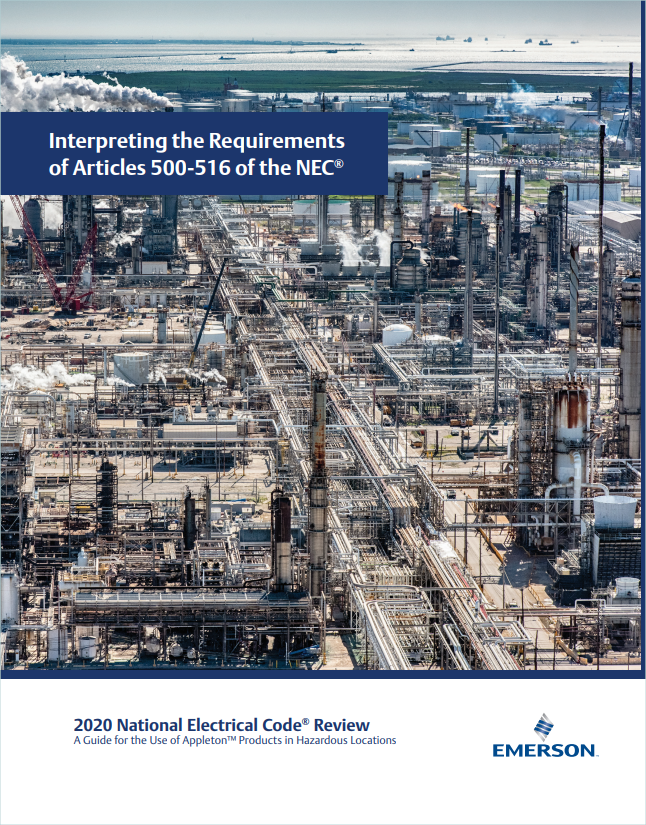For U.S. manufacturers and producers, the National Electric Code (NEC) governs how the installation of electrical components in hazardous areas needs to be performed. Here is the history of the NEC from the National Fire Protection Association.
In 1897, NFPA 70®, National Electrical Code® (NEC®), set the foundation for—and remains the world’s leading authority on—electrical safety in residential, commercial, and industrial occupancies.
Revisions to the NEC have been made over time, including in 2020 and recently again in 2023. Here are the changes in 2020.
The 2020 NEC® featured important changes related to emergency disconnects, ground-fault circuit interrupter protection, surge protection, and a myriad of other topics related to electrical safety, including:
Exterior Emergency Disconnects: Helps to improve electrical safety for emergency responders at one- and two-family dwelling installations.
Deenergizing Panel Boards: Revises service disconnect rules to help increase electrical worker safety.
Marinas and Boatyards: Updates ground-fault protection and leakage-current measurement device requirements.
Power Over Ethernet: Adapts NEC requirements to meet the installation practices of new and evolving technologies.
Conducting Load Calculations: Modernizes the tables currently in use for calculations to reflect improvements in energy efficiency.
Reorganization of Article 310: Includes new user-friendly numbering for important ampacity tables
Exposed Cables and Conductors: Adds new general requirement covering cables and conductors installed exposed on ceiling surfaces and sidewalls.
 A comprehensive 212-page guide, Interpreting the Requirements of Articles 500-516 of the NEC® was put together by Emerson’s Appleton brand team to offer extensive help in determining NEC requirements for the use of electrical products in hazardous locations.
A comprehensive 212-page guide, Interpreting the Requirements of Articles 500-516 of the NEC® was put together by Emerson’s Appleton brand team to offer extensive help in determining NEC requirements for the use of electrical products in hazardous locations.
It’s important to note that all Appleton products intended for use in Class I, Class II, and Class III locations are designed to conform to the relevant requirements in NEC® Sections:
- 7(A) Explosionproof. Class I, Division 1
- 7(G) Nonincendive, Class I, Division 2
- 7(B) Dust Ignitionproof, Class II, Division 1
- 7(C) Dusttight, Class II, Division 2, Class II, Divisions 1 and 2
In the introductory General Information section the guide defines hazardous locations.
A hazardous (classified) location exists when a manufacturing, storage or handling process provides a fuel, consisting of a flammable gas, flammable liquid-produced vapors, combustible liquid-produced vapors, combustible dust, combustible flying or fiber, or some combination of these three elements; and these flammable components can be mixed with enough oxygen from the ambient air to form an explosive atmosphere between the LFL and UFL. Standards written by organizations like the National Fire Protection Association (NFPA®) and the American Petroleum Institute (API®) define the requirements for classification of hazardous locations.
The goes on to share information on the design of explosionproof equipment and the variations of threaded and non-threaded joints to achieve the requirements for the hazardous location. This post only scratches the surface of interpreting these NEC articles 500-516.
If you’re involved in the design and installation of electric devices in hazardous locations, this comprehensive guide will help you achieve the requirements outlined in the NEC.
